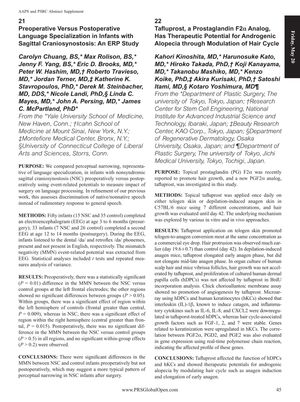Preoperative Versus Postoperative Language Specialization in Infants with Sagittal Craniosynostosis: An ERP Study
April 2016
in “
Plastic and reconstructive surgery. Global open
”

TLDR Surgery may help infants with sagittal craniosynostosis develop more typical language processing.
The study investigated the effects of surgery on language processing in infants with nonsyndromic sagittal craniosynostosis (NSC) by comparing preoperative and postoperative language specialization using event-related potentials (ERPs). Fifty infants, including 15 with NSC and 35 controls, underwent an electroencephalogram (EEG) between the ages of 3 to 6 months, and 33 infants (7 NSC and 26 controls) had a second EEG at 12 to 14 months. The mismatch negativity (MMN) event-related potential was measured while infants listened to phonemes. Preoperatively, there was a significant difference in the MMN between the NSC and control groups at the left frontal electrodes, but no significant differences in other regions. Postoperatively, there were no significant differences between the NSC and control groups in any regions, suggesting that surgery may lead to a more typical pattern of perceptual narrowing in NSC infants.